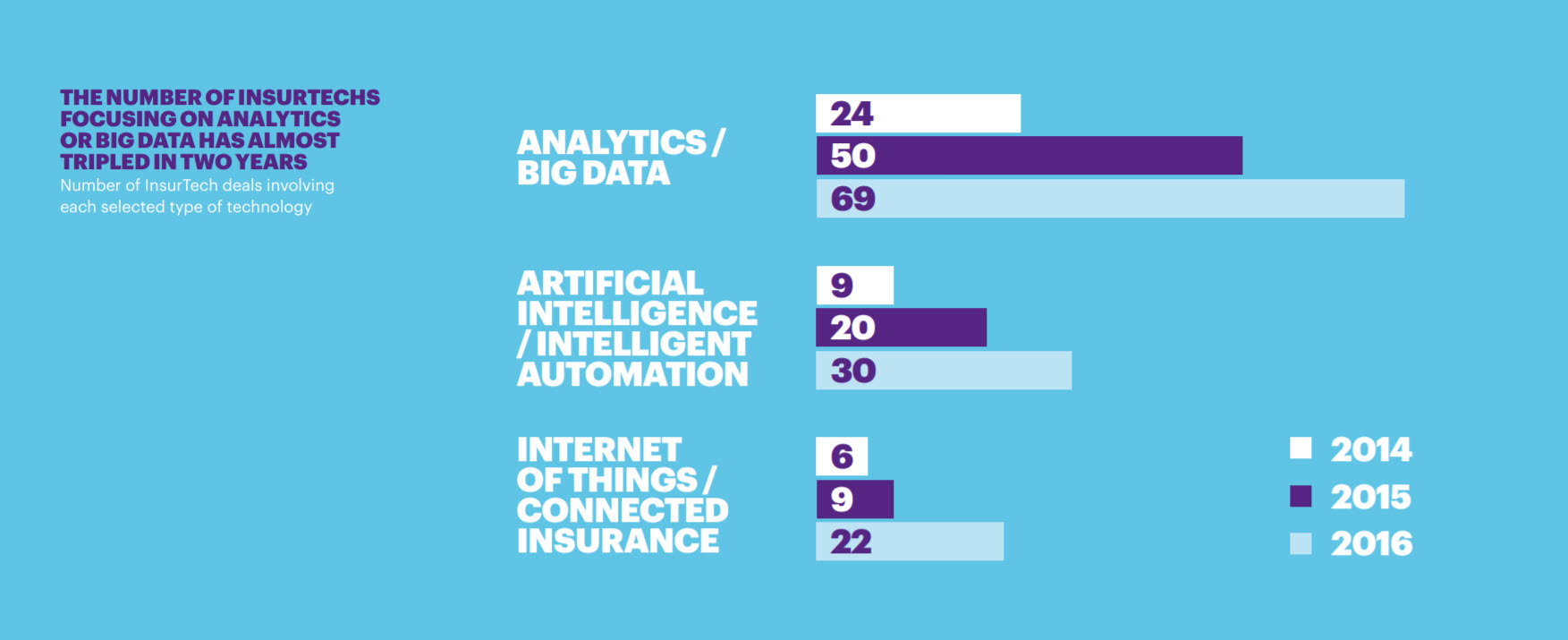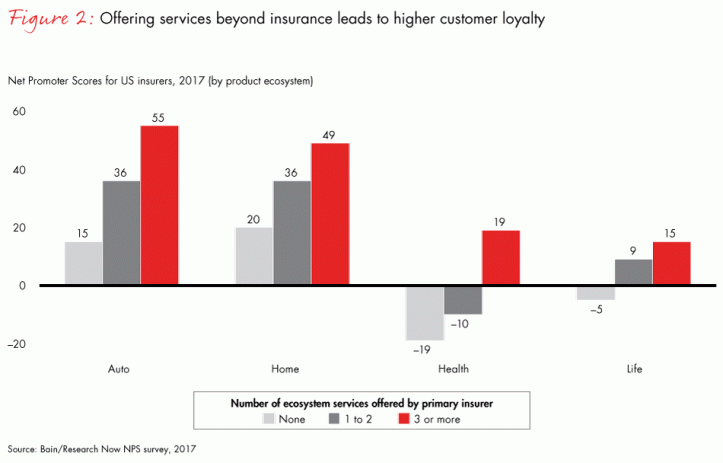In our last two blogs, we discussed why
consumer playbooks and
SMB playbooks have such an effective application for business. Insurers, especially, can use the idea of a playbook to put together a package of viable “plays” that will help them on their shift from Insurance 1.0 into Digital Insurance 2.0 — the second wave of technological and business model advancement within insurance.
In our pregame analysis, we looked at Majesco’s research into consumer and SMB behaviors and expectations. In this blog, we’re going to look specifically at the kinds of offerings that may be ideal for consumers. Of course, we won’t be developing low-level product detail, like an insurer would. Instead, we’ll connect high-level consumer indicators to the types of product and service attributes that could yield insurer differentiation and advantage.
New Consumer Behaviors and Expectations
Across all businesses, including insurance, disruption and change is driven by people. At its simplest, an offering can be created in two ways. First, we might observe changing behaviors and unserved or underserved needs that people have in today’s digital world to come up with an innovative idea that improves outcomes. Second, we might develop a new idea through some other inspiration or observation that meets a need or expectation — one that people didn’t even realize they had until the new idea came along — like Steve Jobs famously did at Apple. With either of these, we can create a value proposition that supports a new Ideal Offering.
See also: Digital Insurance 2.0: Benefits
In 2017, Majesco set out to confirm consumer trends, across generational segments, looking at the attributes of new products and new business models in the marketplace. Using data from our 2016 research, we gauged increased use of new, digital activities that are influencing expectations and behaviors, highlighting year-over-year growth in today’s consumer practices.
The results can be found in our thought-leadership report,
The New Insurance Customer — Digging Deeper: New Expectations, Innovations and Competition; a synopsis of areas of digital impact would include:
Sharing Economy: Ride-sharing, home-sharing and room-sharing are on the rise.
Connected Devices: Fitness trackers are gaining incredible traction across all generations. Telematics, though maturing, are still increasing in growth, especially among Boomers.
Payment Methods: Both use of company app payments (Amazon, Starbucks, etc.) and ApplePay and SamsungPay saw strong year-on-year growth among Gen Z and millennials.
Channels: Across all generations, 22% to 38% of individuals purchased insurance from a website.
Products: Between 25% and 30% of individuals had purchased on-demand insurance in 2017.
Other Emerging Technologies: Items such as drones and 3D printers are growing in use.
If we were in front of a whiteboard, we might use a word cloud to place some of these capabilities side by side and in groupings. For the purposes of the blog, we’ve created a list with many of the relevant concepts an organization will find, that will touch or likely touch Digital Insurance 2.0 offerings. This is the type of exercise that insurers may want to use during product brainstorming sessions. Included in the list are both the technologies themselves and the contexts that will drive the use of these technologies. In creating an Ideal Offering, insurers will want to take many of these capabilities and context drivers into account.
- On-demand
- Sharing
- Telematics
- Fitness tracking
- Property monitoring
- Pay-as-you-go
- Mobile account management
- Digital security
- Digital assistant
- Bundled insurance
- Data-driven pricing
- Gig employment
- Peer-to-peer insurance
- Artificial intelligence
- Preventive services
- Mobile messenger app-based communications and transactions
Given the pronounced generational patterns identified in Majesco’s research, it becomes clear that Ideal Offerings must take into account that different market and product strategies are necessary for each generation. To facilitate this thinking, we developed generational playbooks that summarize the attributes (the “ingredients”) that constitute the ideal insurance offerings (“the innovations”) for each segment (the “recipe model”).
We also identified behavioral targeting opportunities for specific product, service and process offerings for sub-segments within the generations, based on experiences with certain technologies and trends. Here are just a few of our findings:
Gen Z Offerings
Gen Z tops the list for groups that are ready to purchase Digital Insurance 2.0 offerings. These offerings would use highly ranked attributes such as preventive services, rewards-based products, messenger apps, mobile quoting, charitable sharing, on-demand products, bundled products and usage-based products. They are also a prime market for targeting products based on usage of new technologies. For example, those Gen Z members who use fitness trackers (41%), are more interested in having health and life insurance premiums that are partially based on their tracking data. They are also willing to join an affinity group that shares their interests, especially if it helps them reduce the cost of insurance.
So, an insurer trying to identify an Ideal Offering for Gen Z should consider that real-time, personal data tracking tied to fluctuating usage and variable-premium products (premiums based on behavior/activity levels) may be highly attractive to this group. And on-demand products fit their lifestyle needs. They are the industry’s newest buyer that aligns with the new products and models, reflecting the opportunity to capture and engage them today as they emerge as a dominant buyer.
Millennial Offerings
Millennials are likewise open to having personal data drive usage-based insurance. They are mobile users who will be happy transacting via messenger apps. They like the idea of telematics-based auto insurance. They like on-demand offerings and any service that can prevent or minimize accidents and claims. They are willing to share their data if it improves pricing and service. If they have ever used a device that monitors driving, they are highly likely to consider on-demand, device-tracked insurance for other areas of insurance.
Because millennials are also experience-seeking consumers, an insurer looking to capture millennials may want to create products that match up with experiences and trackability. Marine insurance, motorcycle and ATV insurance and any products that can employ both telematics and a mobile-based on/off switch will be highly valued. Because personal watercraft and ATVs are often rented and borrowed instead of owned, on-demand personal liability insurance could be an excellent product, sold both D2C and through rental companies.
In general, all generations, including pre-retirement Boomers, are showing signs that using insurance to cover an event with a specific duration will be a desired capability.
See also: Global Trend Map No. 6: Digital Innovation
Gen X Offerings
There is really very little difference between Gen X consumer desires and those of millennials, reflecting the rapid adaptation to digital by this generation. However, there is greater growth in the Gen X segment regarding mobile payments. Year over year, more of the Gen X cohort paid for transportation through a ride-sharing service like Uber or Lyft, and more of them began using ApplePay and SamsungPay. Though some of this is driven by work/life maturity and lifestyle, it shows a general acceptance regarding mobile transactions and a desire to make transactions as simple as possible.
Ideal Offerings for Gen X will concentrate highly on ease of use and seamless functionality between quotes, admin, payments and claims. Much of this, clearly, is less product-based and more service-based, but when it comes to Digital Insurance 2.0, the two should never be separate considerations, rather should be an integrated offering. Back-end capabilities, front-end digital capabilities and lifestyle-relevant products are all part of the same agile environment.
Pre-Retirement Boomers
It was once thought that pre-retirement Boomers would simply be happy with traditional insurance products serviced in traditional ways. Once again, active lifestyles and our research are proving this to be false. The greatest jump in online insurance purchases falls within the pre-retirement Boomer segment. Because they tend to drive fewer miles, they have also latched onto the idea of usage-based auto insurance, leading the wave of growth in this area as well. Year over year, they are using substantially more fitness trackers, 3D printers and drones — and they are much more likely to have worked as an independent contractor or freelancer. This is not your previous generation of retirees!
Because they tend to travel more, they are excellent candidates for property-monitoring devices as well as on-demand insurance. They want to protect their earnings, so they are price-conscious. When we tested business models against generational segments, pre-retirement Boomers were highly receptive to online life insurance products that included quick quoting and simplified issue.
“DIY” Ideal Offerings for Insurers
Ideas are business tools. They are just as important as systems and processes. Ideas, however, rely on capabilities. Insurance offerings are obviously constrained or enabled by the digital readiness of an insurance company. In other words, to make the playbook work, there must be a foundation in place. For insurers, that foundation is Digital Insurance 2.0.
Digital readiness opens insurer doors to rapid testing of ideas and rollout. It allows a greater amount of freedom in product development, easier business configurability and exponentially better data gathering and digital service. Digital efforts provide speed to value, converting ideas to offerings while opportunities are fresh.
In our next blog in this series, we’ll look at Ideal Offerings within the SMB market.
 A quick personal story
My first role overseas was working on a project team where we set up an insurance carrier in Poland. My role was to set up the target operating model of the agency force for our Polish business, which included everything from recruitment of agents to the sales process with customers.
I was nervous because, up until that time, I had only been a financial adviser and wholesaler and was not sure if I could deliver. I had the following conversation with my former boss a few weeks after joining the project (he was running the project and is a qualified actuary by trade):
Me: "I know nothing about back-office operations, actuarial/product pricing, how to set up a branch. How am I supposed to define the requirements of what the agents need when I have never actually worked in these areas?"
Boss (with a smile): "You have quoted and sold policies to customers, right? You’ve spoken to them about how the underwriting works and then worked with operations people to make sure the policy issued correctly, correct? You’ve walked a customer through a policy document, helped with a claim, dealt with multiple servicing issues and back office people on their behalf, right?"
Me: "Yes."
Boss: "Then you know a lot more than most of the people you are going to be working with on this project…as a lot of them have only seen one area of the business, whereas sales people have to interact with all areas of the business. I will always say, the sales person is one of the smartest people in the whole company and typically will make more money than most of the CEOs, too!"
In our next meeting, in which every workstream lead was present (product, operations, actuarial, etc), my boss stood up in front of everyone and said, "This business will only succeed if the agent is successful. The agent is the heart of this business and will drive our growth. As such, we need to put all of our efforts in place to support the agent in our business model, which also means giving Stephen the support he needs to be able to build the best operating model he can for our success in Poland."
(Thanks, ML, for giving me the confidence in those days. FJ, you, too.)
Some start-ups enabling rather than replacing the agent
There were many startups that presented at the Plug and Play event, some of which focused on enabling the agent/broker, including:
Wellthie – Wellthie is an insurance marketplace and sales optimization platform for brokers and carriers to help with the end-to-end sales process to small businesses. The platform offers live quoting from top medical and ancillary carriers nationwide, contribution modeling, customized proposals, an integrated CRM and more.
Hello ZUM - Hello ZUM is a startup out of Latin America that aims to "organize the world’s insurance information in one click." The management team is made up of veteran insurance industry professionals. Their solution is a SaaS platform that was born out of looking at two areas: 1) the different roles in the insurance industry and how they will evolve in a new digital environment and 2) how they interact with each other and exchange information. Hello ZUM helps to provide all the different stakeholders within the insurance ecosystem with consistent information, which helps make operations and distributors more efficient and ultimately provide a better customer experience, while generating significant cost reduction.
Client Desk – Client Desk is a Canada-based software startup focused on giving tools to brokers and carriers, focusing on engagement, self-servicing and claims management. They provide a white-labeled policyholder web portal and mobile app, as well as a management dashboard used internally by brokers and agents.
HazardHub – HazardHub has two goals: (1) to create the best geographic hazard data available and (2) make it free for every person in the U.S. to see the risks around their property. This can help individuals and their brokers to identify the specific risks that may be around their property. You can try it for free here and sign up for the API here, which will give you as many as 10 inquiries a day for free! For carriers and brokers that want to incorporate HazardHub data into their quoting and rating routines, HazardHub offers a novel pay-on-the-bind approach to pricing.
acuteIQ – acuteIQ is an AI platform that helps brokers and agents with customer acquisition and prospecting by searching a database of 21 million small/medium-sized businesses.
Summary
A few weeks ago, I wrote about my experience of buying health insurance this year. After doing all my research online, I also spent time talking to two different agents. I was amazed at the information that they shared with me that I couldn’t find online; which included information on the evolution of ACA and how it’s affected their business and their clients' experience with different carriers, as well as many other general tips on what I should be looking at for my own insurance needs as a repatriated entrepreneur.
I was reminded about how the role of the agent is much more than only selling and servicing, but about knowing continuing trends, regulations and being able to ask the right questions to individuals to determine what the most appropriate route is to go with the advice they want to provide.
Can AI and a chatbot provide for this? Possibly. But for people like me (and I know I’m not the only one), I prefer talking to a real, live person, who is paid for knowing all the complexities of the market and industry to guide me. As I used to say in my financial planning days to prospective clients, "Just because you can use WebMD to diagnose your problems doesn’t mean you will perform the surgery on yourself, right?"
See also: How to Augment Agent Channels
That’s not to say that agents don’t face a risk. Some of the simpler personal and commercial lines may be able to be sold direct (though, in my opinion, there will almost always need to be a live person to be a backup to answer questions for a customer who purchases online).
The more complex lines and individual circumstances, specifically when it comes to estate/legacy planning, tax sheltering and comprehensive solutions for businesses (both small and large), will need to be assisted by agents. Further, I can’t see super-high-net-worth customers using digital only as their means for buying insurance.
Agents need to start eating their spinach. They need to invest in educating themselves as well as in digital tools that can enhance the customer experience. In the digital age, customer experience is going to the key differentiator. I personally use an agent because I want to have the expertise of a live person to bounce ideas off. But, if the agent I am working with as well as the carrier he is representing both have tools to make my experience with them more engaging (and back office systems that also run smoothly), then I will be a happy policyholder.
In posts here and in conversations I have daily, I keep saying that insurtech startups need to have an insurance person on their team (either as an adviser or part of their management team). I’m going to take that a step further; they need someone who has done insurance sales. If they really want to learn the business, this is going to be the best way for them to do so.
You can find the original article published here.
A quick personal story
My first role overseas was working on a project team where we set up an insurance carrier in Poland. My role was to set up the target operating model of the agency force for our Polish business, which included everything from recruitment of agents to the sales process with customers.
I was nervous because, up until that time, I had only been a financial adviser and wholesaler and was not sure if I could deliver. I had the following conversation with my former boss a few weeks after joining the project (he was running the project and is a qualified actuary by trade):
Me: "I know nothing about back-office operations, actuarial/product pricing, how to set up a branch. How am I supposed to define the requirements of what the agents need when I have never actually worked in these areas?"
Boss (with a smile): "You have quoted and sold policies to customers, right? You’ve spoken to them about how the underwriting works and then worked with operations people to make sure the policy issued correctly, correct? You’ve walked a customer through a policy document, helped with a claim, dealt with multiple servicing issues and back office people on their behalf, right?"
Me: "Yes."
Boss: "Then you know a lot more than most of the people you are going to be working with on this project…as a lot of them have only seen one area of the business, whereas sales people have to interact with all areas of the business. I will always say, the sales person is one of the smartest people in the whole company and typically will make more money than most of the CEOs, too!"
In our next meeting, in which every workstream lead was present (product, operations, actuarial, etc), my boss stood up in front of everyone and said, "This business will only succeed if the agent is successful. The agent is the heart of this business and will drive our growth. As such, we need to put all of our efforts in place to support the agent in our business model, which also means giving Stephen the support he needs to be able to build the best operating model he can for our success in Poland."
(Thanks, ML, for giving me the confidence in those days. FJ, you, too.)
Some start-ups enabling rather than replacing the agent
There were many startups that presented at the Plug and Play event, some of which focused on enabling the agent/broker, including:
Wellthie – Wellthie is an insurance marketplace and sales optimization platform for brokers and carriers to help with the end-to-end sales process to small businesses. The platform offers live quoting from top medical and ancillary carriers nationwide, contribution modeling, customized proposals, an integrated CRM and more.
Hello ZUM - Hello ZUM is a startup out of Latin America that aims to "organize the world’s insurance information in one click." The management team is made up of veteran insurance industry professionals. Their solution is a SaaS platform that was born out of looking at two areas: 1) the different roles in the insurance industry and how they will evolve in a new digital environment and 2) how they interact with each other and exchange information. Hello ZUM helps to provide all the different stakeholders within the insurance ecosystem with consistent information, which helps make operations and distributors more efficient and ultimately provide a better customer experience, while generating significant cost reduction.
Client Desk – Client Desk is a Canada-based software startup focused on giving tools to brokers and carriers, focusing on engagement, self-servicing and claims management. They provide a white-labeled policyholder web portal and mobile app, as well as a management dashboard used internally by brokers and agents.
HazardHub – HazardHub has two goals: (1) to create the best geographic hazard data available and (2) make it free for every person in the U.S. to see the risks around their property. This can help individuals and their brokers to identify the specific risks that may be around their property. You can try it for free here and sign up for the API here, which will give you as many as 10 inquiries a day for free! For carriers and brokers that want to incorporate HazardHub data into their quoting and rating routines, HazardHub offers a novel pay-on-the-bind approach to pricing.
acuteIQ – acuteIQ is an AI platform that helps brokers and agents with customer acquisition and prospecting by searching a database of 21 million small/medium-sized businesses.
Summary
A few weeks ago, I wrote about my experience of buying health insurance this year. After doing all my research online, I also spent time talking to two different agents. I was amazed at the information that they shared with me that I couldn’t find online; which included information on the evolution of ACA and how it’s affected their business and their clients' experience with different carriers, as well as many other general tips on what I should be looking at for my own insurance needs as a repatriated entrepreneur.
I was reminded about how the role of the agent is much more than only selling and servicing, but about knowing continuing trends, regulations and being able to ask the right questions to individuals to determine what the most appropriate route is to go with the advice they want to provide.
Can AI and a chatbot provide for this? Possibly. But for people like me (and I know I’m not the only one), I prefer talking to a real, live person, who is paid for knowing all the complexities of the market and industry to guide me. As I used to say in my financial planning days to prospective clients, "Just because you can use WebMD to diagnose your problems doesn’t mean you will perform the surgery on yourself, right?"
See also: How to Augment Agent Channels
That’s not to say that agents don’t face a risk. Some of the simpler personal and commercial lines may be able to be sold direct (though, in my opinion, there will almost always need to be a live person to be a backup to answer questions for a customer who purchases online).
The more complex lines and individual circumstances, specifically when it comes to estate/legacy planning, tax sheltering and comprehensive solutions for businesses (both small and large), will need to be assisted by agents. Further, I can’t see super-high-net-worth customers using digital only as their means for buying insurance.
Agents need to start eating their spinach. They need to invest in educating themselves as well as in digital tools that can enhance the customer experience. In the digital age, customer experience is going to the key differentiator. I personally use an agent because I want to have the expertise of a live person to bounce ideas off. But, if the agent I am working with as well as the carrier he is representing both have tools to make my experience with them more engaging (and back office systems that also run smoothly), then I will be a happy policyholder.
In posts here and in conversations I have daily, I keep saying that insurtech startups need to have an insurance person on their team (either as an adviser or part of their management team). I’m going to take that a step further; they need someone who has done insurance sales. If they really want to learn the business, this is going to be the best way for them to do so.
You can find the original article published here.
























